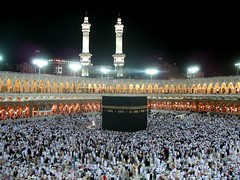The topic for my blog this week comes from "The Barbarian West" by J.M. Wallace-Hadril (I highly recommend it). It is a wonderfully funny book about the various barbarian tribes and their immigration to and replication of the Roman people after their fall. Wallace-Hadril speaks of the Lombards, the Franks, the Germans, Goths, Visigoths, Anglo-Saxons, and how each group is effected by immigration as well as the rising political and spiritual power of the Church. Well, I was reading a selection on Gaul and the Franks, of which Charlemagne took up most of the chapter. It was deep into the selection when I came across a small reference to a Byzantine Empress, Irene, and that she alone came to power. This caught my attention. An Empress? A woman taking over an full power of an entire empire? In a time where women were low on the totem pole, this struck me not as odd, but something worth looking into, something about which to know more. I seemed to already have a sense of respect for this woman. How was it a woman could rule in a rough time, a time of men? This is what I needed to know. Thus began my historical journey into the bizarre life and time of Irene of Athens.
It was upon the death of her husband, Leo IV in 780 CE of Byzantine, that Irene of Athens became “regent’ of the eastern Roman Empire for her ten year old son, Constantine VI – who became official Emperor. Soon after, however, Irene’s ambition overcame her and she began calling herself, in the Greek, “emperor” instead of “empress.” Immediately she began work on the restoration of Icon veneration, a well-known Orthodox practice, not altogether practiced in the western empire or entirely by the papacy. However, it was due to
Pope Hadrian I that this was “reaffirmed” as “proper veneration.” This was seen as a helping hand in uniting both Roman Catholicism and Eastern Orthodoxy, though only for a short time. Hadrian’s successor, Pope Leo III did not recognize the legitimacy of Irene’s rule in Constantinople. It was then on Christmas day 800 Leo crowned Charlemagne, the King of Franks and Gaul, as Imperator Augustus. This only reinforced the rift between the two opposing forces, however Irene is said to have negotiated a wedding between her son and a daughter of the, now, Roman Emperor. This failed due to reluctance on the part of her son. Irene, persistent and zealous, then negotiated a marriage contract between her and Charlemagne himself thus uniting the two empires not only politically, but spiritually as well. This was not to be, however, as a plot by the underlings of the brother of Irene’s dead husband only served to ruin the attempted match.
Irene went on ruling the Byzantine Empire, much to the dismay of her son. She did not give up her power when Constantine reached the legal age to assume power. The two were said to have clashed many times over this and multiple issues of state.
Michael Psellus, an 11th Century historian and philosopher, depicts it as “…hit and hit back in turn, and now Irene exercised absolute power, now Constantine took possession of the palace alone, again the mother, again the son, until their conflict resulted in a disaster for both.” This sums up their power “sharing” arrangement accurately. After some time, Constantine made a move against his mother, which failed due to an earthquake. Not unaware, Irene took action then, forcing the entire army to take an oath of loyalty to her and her alone, ignoring the legitimacy of her son. Not taking this well, the army itself rose up and calling for Constantine as their only ruler. In taking the power he was being given, son imprisoned mother, but did not depose her, rather confining her to one of her various palaces for a two-year stint. It was then in 792 Constantine recalled his mother and restored her title of Empress, though it was made clear that he was Emperor.
Yet, Constantine proved to be only so much, as he never led the Byzantine army to any kind of greatness. The army called for Caesar Nicephorus (Constantine’s uncle) to come out of retirement and become Emperor. Once again producing disastrous results, Irene advised her son to take action against him, which he did and only half succeeded. While he did achieve mutilation of his uncle and some followers thereof, this, in turn, resulted in a
“full-scale revolt.” While this uprising was subdued, the Emperor was now on thin ice, being seen as weak to rely on his mother.
Some years past but the bitter taste of Irene still lingered in the mouths of many. On October 31st, 802, Irene was deposed as Empress, the seat of power usurped by her Finance Minister, Nicephorus with the help of courtiers, members of the army, and even relatives of Irene alike. Perhaps taking pity on her, Nicephorus did not kill her, rather exiled her to the island of Lesbos. It was here she was reduced to subsistence living by way of weaving. She promptly died at the end of that year.
Though during her rule she is said to have been something of a philanthropist. She set money aside for the construction for hostiles for the young, homes and hospices for the old and sick, even final resting places for those who could not afford to be buried. She was also praised by many for her re-institution of icon veneration, something that still lives on today.


